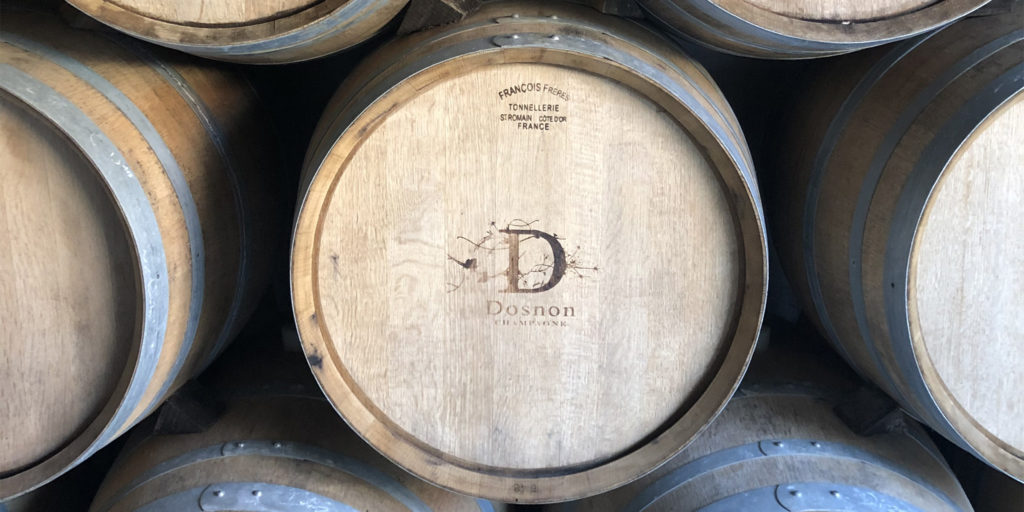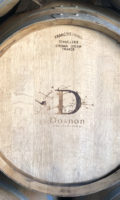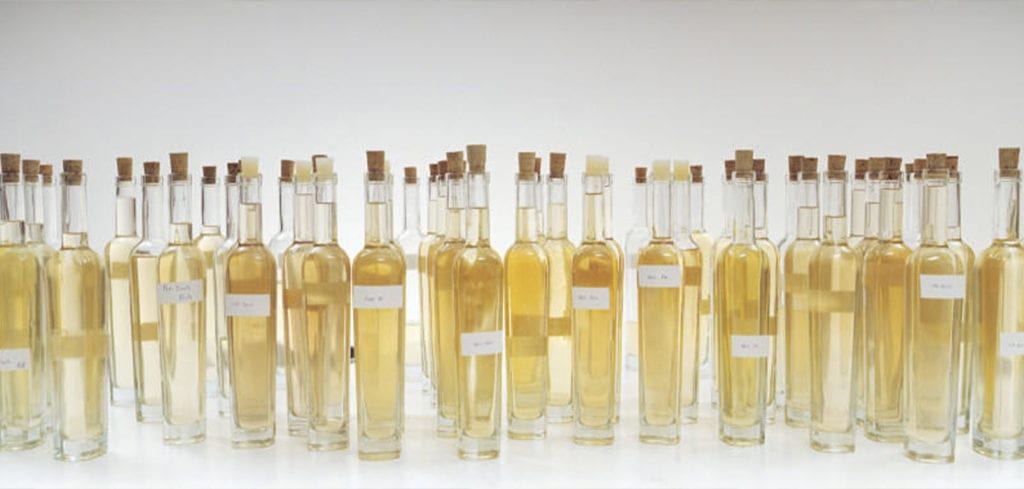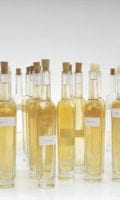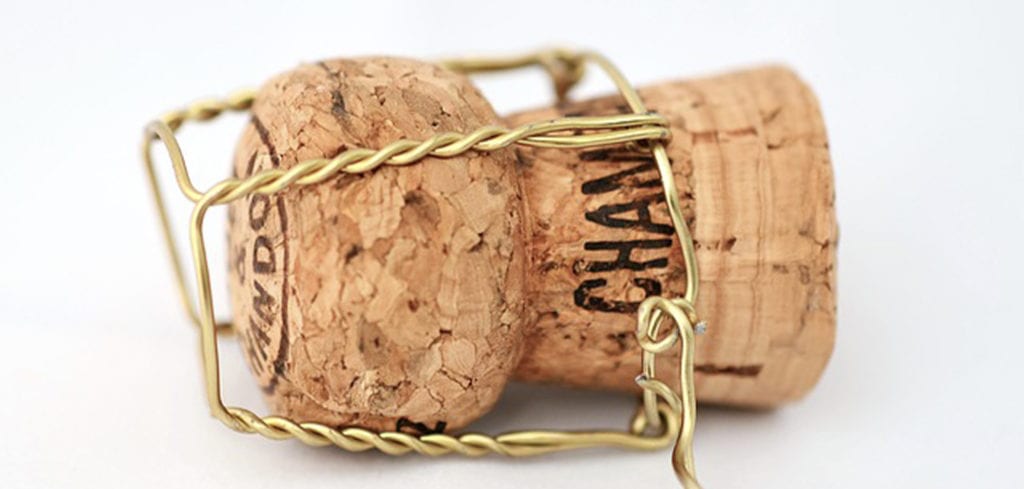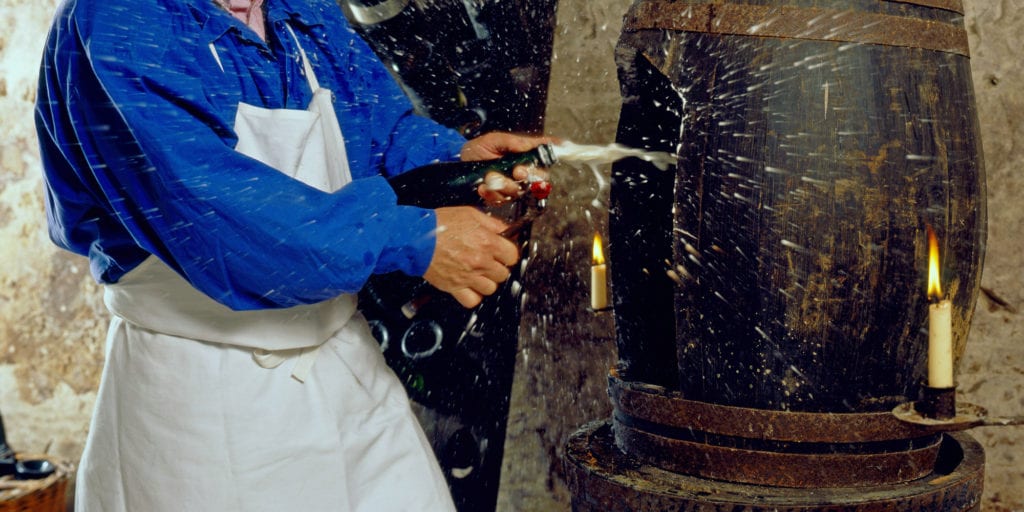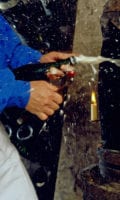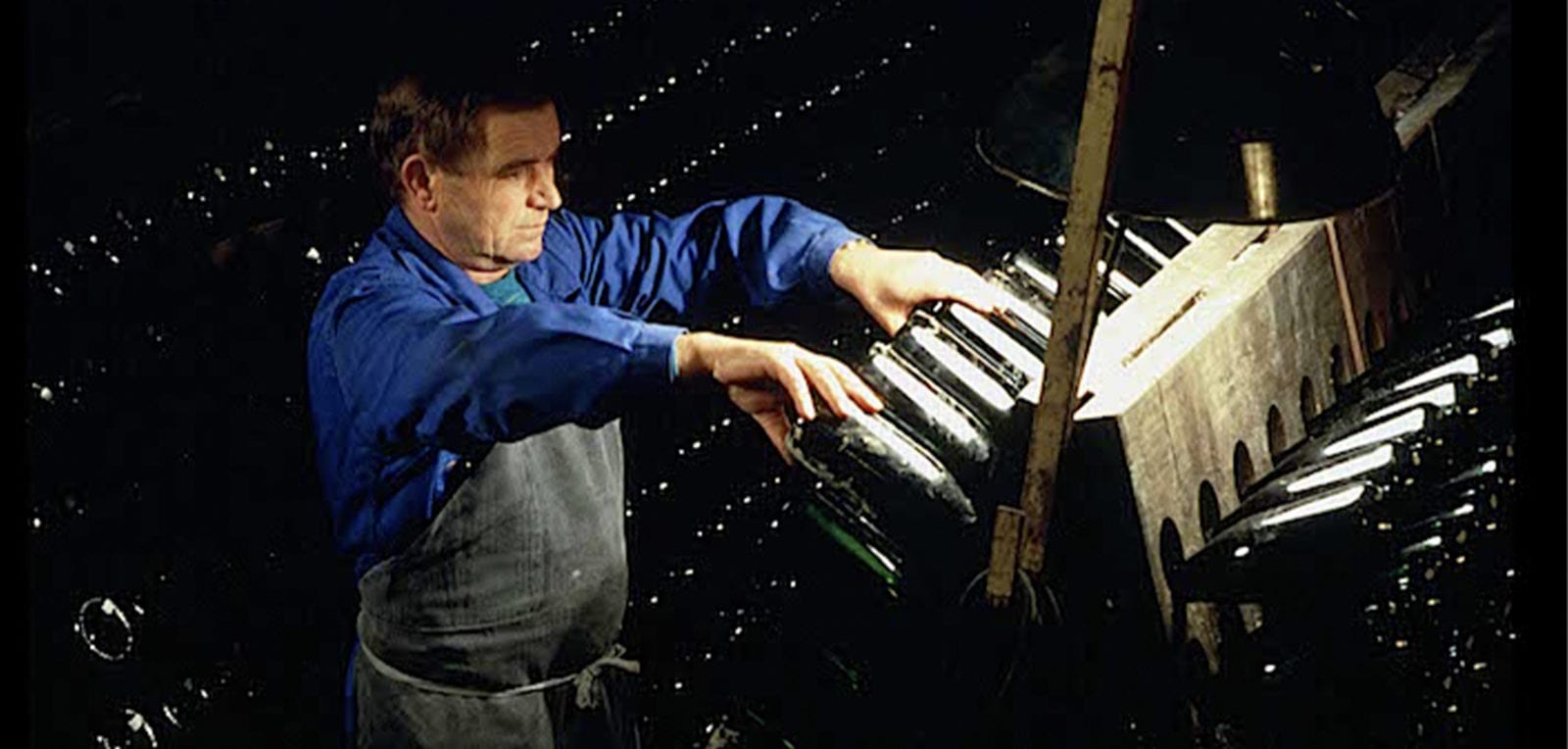
Before champagne is sold, the used-up yeasts must be removed. To do so, the bottle, which is lying horizontally, is turned upside down incrementally each day and «rattled» or rotated until, after more than a month, the deposits created during the foaming process have concentrated in the neck of the bottle. In this way, this deposit (of yeasts and «riddling adjuvant») can be easily removed during disgorging.
Today, the riddling is still partly done by so-called "remueurs" by hand at the wooden riddling desk. A professional "riddler" can rattle around 40,000 bottles per day. Marked with a chalk line at the bottom of the bottle, the individual bottles are turned an eighth or a quarter to the left or right with a quick hand movement. In the process, the bottle is gradually moved from a horizontal position to an upside-down position. This gradual turning, which has been carried out in exactly the same way by the "remueurs" of the Champagne for centuries, ensures that even the smallest residues collect in the neck of the bottle to be disgorged, so that the wine is completely clear at the end. Within one and a half months, a bottle is turned by hand an average of 25 times.
Today, however, the joggling process is automated and done by a so-called "gyropalette" that moves up to 500 bottles in metal baskets at once. They are in operation 24 hours a day, 7 days a week and in this way shorten the process from 6 weeks to 1 week, without affecting the quality of the champagne.


